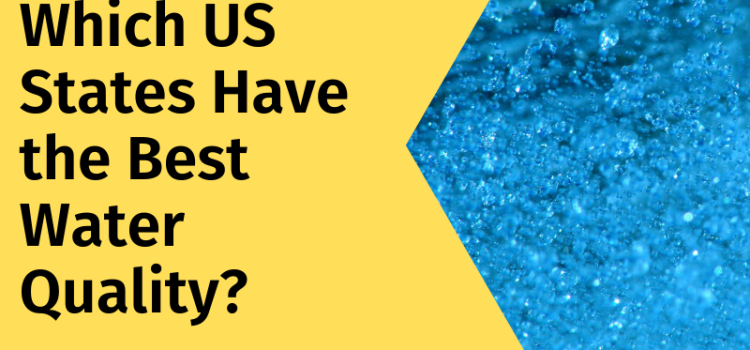Per- and polyfluoroalkyl substances (PFAS), including perfluorooctanoic acid (PFOA), are synthetic chemicals found in various consumer products, industrial processes, and firefighting foams. Known as “forever chemicals,” PFAS are resistant to degradation, allowing them to persist in water sources and accumulate in the human body over time. The health risks linked to PFAS exposure include thyroid disorders, immune system disruption, developmental issues, cancer, and liver damage.
Municipal water treatment systems often fail to effectively remove PFAS and PFOA due to the chemicals’ molecular stability and resistance to conventional filtration. Therefore, a dedicated home or commercial water filtration solution is essential for eliminating these hazardous compounds and safeguarding public health.
Read: EPA Sets First Federal Limits on Dangerous ‘Forever Chemicals’ in Drinking Water
Why Conventional Filtration Methods Fail
Many standard filtration systems, such as activated carbon filters, ceramic filters, and basic reverse osmosis (RO) units, offer limited efficacy against PFAS. While activated carbon has been shown to reduce some PFAS compounds, its effectiveness varies based on contact time, filter age, and PFAS chain length. Additionally, standard RO membranes may allow trace amounts of short-chain PFAS to pass through, rendering them insufficient for comprehensive protection.
The Gold Standard: Advanced Reverse Osmosis Systems with Dual Filtration
The most effective way to eliminate PFAS and PFOA from your drinking water involves combining multiple filtration technologies into a robust system engineered specifically for contaminant removal. The optimal solution integrates the following:
- High-Pressure Reverse Osmosis (RO) Membranes
Advanced high-pressure RO membranes with a tight pore size (<0.0001 micron) are designed to reject up to 99% of PFAS, including both long-chain and short-chain compounds. These membranes work by forcing water molecules through a semi-permeable barrier, separating harmful contaminants at the molecular level.
- Key Benefit: Near-complete rejection of dissolved solids and synthetic organic compounds like PFOA and PFOS.
- Performance: Certified Reverse Osmosis systems show consistent PFAS rejection levels across varying water chemistries.
- Granular Activated Carbon (GAC) Post-Filtration
Placing granular activated carbon filters after the RO stage ensures secondary adsorption of any residual PFAS that might bypass the membrane. This dual-layer approach maximizes contaminant capture and extends the lifespan of the primary RO membrane.
- Key Benefit: Enhanced protection against trace PFAS and restoration of water taste.
- Adsorption Rate: GAC media with high iodine number or impregnated blends show the best performance in trapping fluorinated compounds.
- Ion Exchange Resins for Targeted PFAS Removal
Anion exchange resins, specifically engineered to remove negatively charged contaminants, offer exceptional performance against short-chain PFAS, which are more difficult to eliminate with standard RO.
- Resin Type: Strong base anion resins with high capacity for fluorinated organics.
- Placement: Can be used as a pre-treatment or polishing step in conjunction with RO and GAC.
Read: $3 Billion for Lead Pipe Replacement to Deliver Clean Drinking Water
System Configuration for Maximum PFAS Elimination
An ideal PFAS removal system should follow this multi-stage configuration:
- Pre-Filtration (sediment and carbon block) – removes chlorine, particulates, and protects downstream components.
- Ion Exchange Resin Chamber – captures short-chain PFAS early in the treatment process.
- High-Efficiency RO Membrane – eliminates the majority of PFAS, PFOA, heavy metals, and dissolved solids.
- Granular Activated Carbon Polishing Filter – improves taste and removes any lingering contaminants.
- Remineralization Filter (optional) – restores essential minerals like calcium and magnesium post-filtration.
This structure ensures layered protection, eliminating over 95–99.9% of PFAS compounds depending on water quality, system flow rate, and maintenance.
Key Features to Look for in a PFAS Removal System
- NSF/ANSI 53 or 58 Certification for PFAS removal
- Third-party lab testing reports showing PFAS reduction levels
- Modular design for easy maintenance and filter replacement
- Smart monitoring systems for filter life and performance metrics
- High-pressure pumps for consistent RO membrane performance
Top Industries and Households That Require PFAS Protection
PFAS contamination is not limited to residential water. The following sectors benefit from PFAS-targeted water purification systems:
- Fire Stations and Military Facilities (due to foam runoff)
- Chemical Manufacturing Plants
- Wastewater Treatment Plants
- Schools and Daycare Centers
- Commercial Buildings with Private Wells
- Rural Communities Near Industrial Sites
Read: What is TDS Level in Water & Why Should You Measure It?
Health and Environmental Benefits of Eliminating PFAS
- Reduced cancer risk associated with long-term exposure
- Improved endocrine and immune health
- Protection for infants and children, who are more susceptible to developmental harm
- Prevention of bioaccumulation in food chains and ecosystems
- Sustainable water quality for future generations
Maintenance Tips to Ensure PFAS-Free Water Year-Round
- Replace RO membranes every 2–3 years depending on TDS levels
- Change carbon filters every 6–12 months for optimal taste and contaminant removal
- Monitor system pressure and flow rate to detect membrane fouling
- Test water quarterly to confirm continued PFAS elimination
- Flush system after filter changes to prevent contaminant breakthrough
Conclusion: Choose Proven Solutions for PFAS and PFOA Removal
Eliminating PFAS and PFOA from drinking water requires more than generic filtration—it demands precision-engineered purification systems that combine RO, activated carbon, and ion exchange technologies. By choosing certified systems and maintaining them diligently, households and industries can achieve near-total PFAS removal, ensuring clean, safe water that protects both human health and the environment.
Investing in the right technology today guarantees peace of mind tomorrow—because when it comes to PFAS, removal is not optional; it’s essential.











